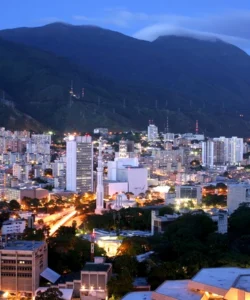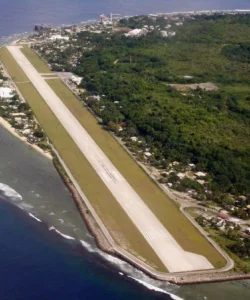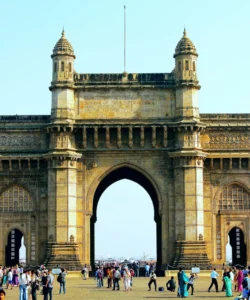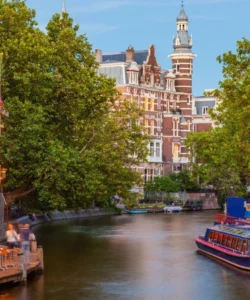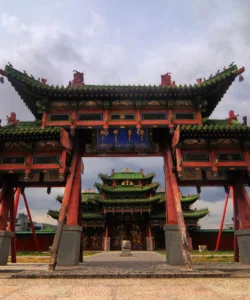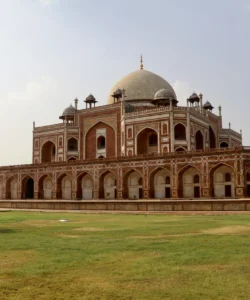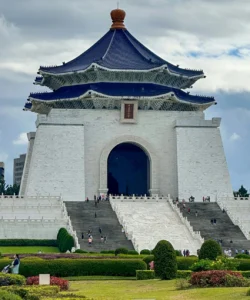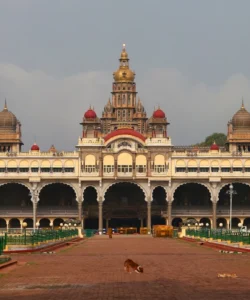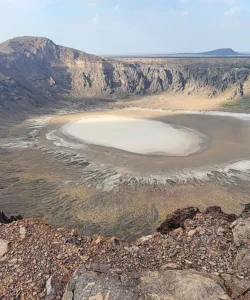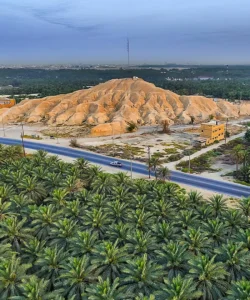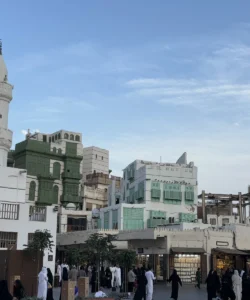Al-Balad, also known as Historic Jeddah, is a captivating historical district located in the city of Jeddah, Saudi Arabia. Its name, “Al-Balad,” simply means “the town,” a testament to its role as the city’s ancient core. This UNESCO World Heritage Site is a living testament to centuries of Red Sea trade and a vital gateway for pilgrims journeying to Mecca.
Name: Al-Balad (Arabic: البلد, “the town”; also known as Historic Jeddah)
Address: Al-Balad, Jeddah, Mecca Province, Saudi Arabia. It is situated on the coast of the Red Sea.
How to Get There:
Al-Balad is a major historical attraction in Jeddah and is well-connected by modern infrastructure.
- By Air: The closest airport is King Abdulaziz International Airport (JED) in Jeddah. From the airport, Al-Balad is a relatively short drive (around 30-40 minutes) by taxi or ride-sharing apps like Uber or Careem.
- By Train: The Haramain High-Speed Railway has a station in Jeddah, connecting the city to Mecca and Medina. From the train station, a taxi or ride-sharing service can take you to Al-Balad in about 15-20 minutes.
- By Road: Al-Balad is easily accessible by car from other parts of Jeddah. Parking is available, though finding a spot can be challenging in the narrow streets.
- Walking: The best way to explore Al-Balad is on foot. The narrow alleys and souqs are designed for pedestrians, and a walking tour is the best way to discover the intricate details and vibrant atmosphere.
- Organized Tours: Many tour operators in Jeddah offer guided walking tours of Al-Balad, which can provide historical context and access to specific heritage homes and cultural centers.
- Best Time to Visit: The cooler months from October to April are ideal for visiting, as the weather is more pleasant. The evening is a particularly good time, as the markets come alive with glowing lanterns, and the sea breeze offers a cool respite.
Landscape and Architecture:
Al-Balad’s “architecture” is a unique and distinctive style known as Hijazi architecture, which flourished due to its location as a trading port and a hub for pilgrims.
- Coral Stone Houses: The most striking feature is the collection of centuries-old coral-stone buildings. The stone, known as mangabi, was sourced from the Red Sea and used to construct multi-story tower houses. These houses were then covered in lime plaster to protect them from the salty air and sandstorms.
- Rawashin (Wooden Balconies): The iconic rawashin are intricately carved wooden screens or balconies that project from the upper floors of the buildings. These beautiful, balcony-like bay windows serve a dual purpose: they allow for air circulation to cool the house during the hot summer months, and they provide privacy for the families inside, particularly for women. The dark teak wood of the rawashin creates a stunning contrast with the light-colored coral-stone walls.
- Labyrinthine Alleys: The urban layout of Al-Balad is a labyrinth of narrow, winding alleys and streets. This design was intentional, providing shade and creating a sense of community. The alleys often open up to create small public squares or courtyards, fostering natural social interactions.
- Vibrant Souqs and Markets: The district is famous for its bustling traditional markets, or souqs, which are an integral part of its architecture and atmosphere. The most famous is Souq Al-Alawi, one of the largest in Saudi Arabia, where you can find textiles, spices, dates, jewelry, and traditional crafts.
- Historic Mosques: Al-Balad is home to several historic mosques, including the Al-Shafi’i Mosque, which is built of coral limestone and wood and has parts dating back nearly a thousand years.
- Heritage Houses: Restored heritage houses, such as Beit Nassif (Nassif House), which once hosted King Abdulaziz, and Beit Sharbatly, now serve as museums and cultural centers, offering a glimpse into the lifestyle of wealthy merchant families from the late 19th and early 20th centuries.
- City Gates: The old city was historically surrounded by a wall with eight gates, although these were demolished in the 1940s. The Bab Makkah (Makkah Gate), the traditional starting point for pilgrims to Mecca, is a symbolic entry into the historic core.
What Makes It Famous:
- UNESCO World Heritage Site: Inscribed in 2014, Al-Balad is recognized for its outstanding universal value as a unique urban fabric with a distinctive architectural style that reflects its role as a major port for the Indian Ocean trade and a gateway for pilgrims to Mecca.
- Hijazi Architecture and Rawashin: The district is world-renowned for its well-preserved Hijazi architectural style, particularly the iconic, intricately carved wooden rawashin that give the buildings a unique and mesmerizing aesthetic.
- Gateway to Mecca: Al-Balad served as the main port of entry for pilgrims arriving by sea before they embarked on their journey to Mecca. This historical role has made it a sacred starting point for millions of Muslims over centuries.
- Cultural Melting Pot: Its status as a cosmopolitan trading port, where merchants from the Arabian Peninsula, Africa, India, and the Levant converged, has created a rich legacy of diverse cultures, traditions, and cuisines.
- Vibrant Living Heritage: Al-Balad is not a museum in the traditional sense; it’s a living, breathing heritage site with a bustling souq, local cafes, and a community that continues to preserve its traditions.
- Ongoing Restoration: As part of Saudi Arabia’s Vision 2030, Al-Balad is undergoing extensive restoration and revitalization projects to preserve its historic buildings and urban fabric, ensuring its future as a cultural and tourism destination.
Differences from Some Other Wonders:
- Coral Stone and Rawashin Architecture: While other historical cities like AlUla Old Town are made of mud bricks and have their own distinct styles, Al-Balad’s architecture is uniquely defined by its use of coral stone as the primary building material and the intricate, projecting wooden rawashin that are a signature of the Hijazi style.
- Seaside Urbanism: Unlike inland desert cities (like AlUla Old Town or Hegra) that were built in oases, Al-Balad’s architecture and culture were shaped by its location as a port on the Red Sea, with a focus on trade, fishing, and receiving pilgrims by boat.
- Focus on a Modern Port’s Historic Core: While many ancient cities are now remote, Al-Balad is the historic core of a thriving modern city, Jeddah, creating a powerful juxtaposition of ancient traditions and contemporary life that is immediately visible.
- Pilgrimage Route Starting Point: The specific identity of Al-Balad as the traditional starting point for the land journey to Mecca gives it a unique religious and historical function that distinguishes it from other ancient trading cities.
- Vibrant Souq and Commercial Life: While many ancient sites are archaeological ruins, Al-Balad’s fame is deeply tied to its vibrant, active souqs (markets) and commercial life, which are a central part of the visitor experience.
- Aesthetic of Light and Air: The architecture, particularly the rawashin and narrow alleys, was specifically designed to cope with the climate by providing ventilation and shade, making its urban design itself a sophisticated response to the coastal desert environment.
Al-Balad Photos:































